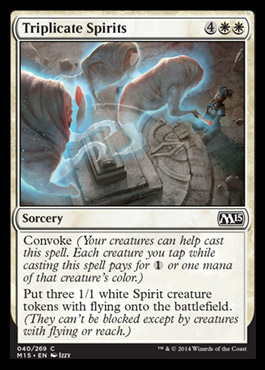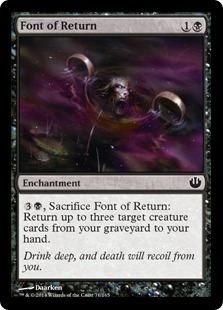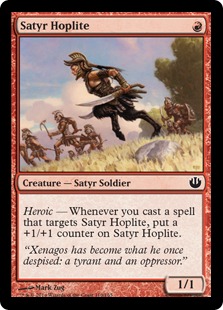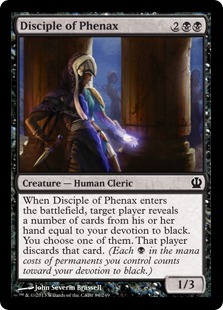Earlier in the week, I discussed New World Order, which is a specific design philosophy that governs what is acceptable at Common. Then, last time, I discussed the role that Commons play in the design of a set. Today, for my final entry in this series, I want to talk about what we should expect from Standard Pauper based on what we learned from the previous two entries.
Standard Pauper is a great format. It's cheap to play, uses the most popular format, is well-supported by Player Run Events, and enjoys a deep metagame. In fact, I wrote a whole article a couple years back about exactly why it's good for both players and for Wizards of the Coast. However, the specific constraints that go into Common design have a significant impact on the kind of cards we can expect going forward.
So here's the good news:
- Standard Pauper will always include the themes and mechanics of a new set. Since a central tenet of design is that these needs to be present at Common, the format will always include the key elements of a set. This is good, as it keeps the format from going stale.
- Standard Pauper will always have access to certain types of effects. To make a balanced Limited environment, a new set will always include removal, pump-effects, mana-ramp, counterspells, card draw, and the like. Because of the inclusion of these elements, playing Standard Pauper will continue to be an experience that is representative of the game as a whole.
- In Standard Pauper, the power-level will be relatively flat. No one card should warp the format so strongly as to negatively affect the overall metagame, all other things being equal. Additionally, this keeps the format accessible to new players and the prices of individual cards low.
- Standard Pauper will include a lot of cards that aren't playable. According to the tenets of New World Order, 80% of the Commons will be simple, 1-for-1 effects, that have only a minor effect, if any, on any other cards in play. Thus, only around 20% of the Commons will be considerable playable in the format, and only a handful of those will see widespread play.
- Even the best of the cards in Standard Pauper will be relatively simple The 20% that get pushed from any set will only get pushed so far. Compared to even the Uncommons in the set, the complexity of the strongest cards will be low.
- Standard Pauper will include a lot of the same cards, with only minor variation, from set to set. Since every Limited environment needs certain types of effects, those effects will be present in every set.
I hope you enjoyed this look at Common Design. See you next week.



















